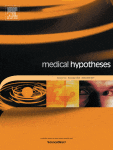this is the comment threadQ:
I notice when I wear a cap or any type of headwear I get a great boost in temps/metabolism and feel serotonin lower a lot - I feel a lot more calm.
Does head insulation and increasing temperature for the brain provide a good boost in metabolism ? I was curious why I never see you in headwear or if this was correct
A:
I wear a hat when I’m in a cold place, but generally my thick hair has been enough. Keeping the brain temperature up is extremely important, especially for restful sleep. It’s natural for the forehead to be a little cooler than the rear parts of the brain. In the winter I keep a high-watt bulb over my work area, shining on my head.
do humans create more MUFA in lower temperatures and more SFA in higher temperatures?
should we not be using things like fans or air conditioning in the summer? to keep temperatures higher throughout the day?
and should heaters be activated full force in winter? so youre sweating constantly all day?


